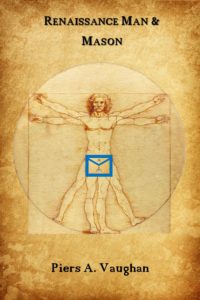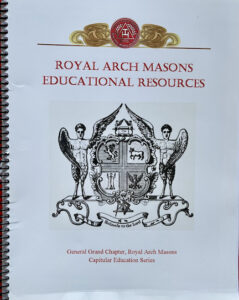Esoteric Studies

This book reproduces a full medieval Office of the Holy Spirit as well as the rare Hours dating from the eighteenth-century. For each manuscript there is a transcription of the Latin text and a rendering into English drawn from existing devotional texts
The introduction discusses the theology underlying the use of the Office of the Holy Spirit by the eighteenth-century mystic and theurgist, Martinez de Pasqually. It has a particular focus on Pasqually’s choice of the penitential psalms the Miserere Mei and De Profundis when reciting the Office.
Reverence of the Holy Spirit was important to Pasqually, who understood that the liturgy of the Church contained spiritual power. He recognised the authority of the Church to “bind and loose” evil through the mandate bestowed upon it by Christ through the Holy Spirit. It was therefore fitting for Pasqually to encourage his own secret priesthood to recite these ancient prayers to the Advocate and Illuminator of man.

Not as Above, Not as Below: How We Got the Emerald Tablet Wrong by John Gilbert

The Way Without Masters by
This collection of nondualist texts by Rémi Boyer forms an anthology that is both classic and singular, traditional and avant-garde, in response to a suggestion made to the author in 1998 by Lima de Freitas: “The avant-gardes widen the breach in opacity so that the traditions can slip in.”
The philosophical, metaphysical, alchemical, and poetic texts gathered and expanded in this volume were published in France, Spain, and Portugal, in a dispersed manner, over the last three decades. They relate to the philosophies of awakening, the traditions of internal alchemy, and nondual metaphysics, but above all convey a method and a discipline of the arcane implemented on a daily basis. The author is bilingual in his own tongue. Alongside a common, consensual, profane manner of speaking, he proposes another relationship to language, non-Aristotelian, crepuscular, and poetic, seeking the original meaning in the sounds themselves, prior to the words, in order to allow the free circulation of mythemes and to find the primary power of the word, renewing a tradition of which Portugal and India have become the guardians. Whether with vigor or elegance, the words disorganize and disturb the conditioned to leave free space for Being and to open the doors of luminous infinities leading to the Recognition and Reintegration of our Original Nature. In reality, it is only a matter, sound after sound, word after word, of Freedom.

The De Granville Manuscripts: Élus Coëns Ritual and Instruction From The Eighteenth Century
A new and unabridged translation of the surviving papers of Lieutenant-Colonel Pierre André de Grainville (1728-1794). De Grainville was an initiate of the enigmatic Martinez de Pasqually, the founder of the mysterious Élus Coëns.
Included are both BnF folios FM4 1282 and FM4 1282A

To better understand William Blake, it is necessary to understand his sources of inspiration. While much has been written about the influences of Paracelsus and Swedenborg on his work, a key influence on Blake was the self-taught sixteenth-century mystic Jacob Boehme. Blake and Boehme believed they had mystical experiences and visions that inspired their writing.
This book embarks on a profound exploration of the connection between these two visionaries. The author meticulously dissects Blake’s tempera painting ‘An Allegory of the Spiritual Condition of Man’ to comprehensively analyse Blake’s beliefs. The book carefully examines the painting as a whole and its constituent parts, exploring the relationships between them before reassembling it.
‘An Allegory of the Spiritual Condition of Man’ has rich potential for interpretation, encompassing both Kabbalistic and alchemical perspectives. The author skilfully incorporates these interpretations into the book’s structure, leading readers on a fascinating journey of discovery and deepening their understanding and appreciation of the philosophical alchemy underpinning Blake’s mysticism.


Martinez de Pasqually: Treatise on the Reintegration of Beings (Audiobook)

Rhymes and Reason Translated by Stuart Clelland
.

FROM THE DOCTRINE OF REINTEGRATION TO THE IMAGO TEMPLI
By Rémi Boyer, trans. Michael Sanborn
This book could just as well have been titled The Rectified Scottish Rite as a Way of Awakening, thus completing the triptych of works by Rémi Boyer on the ways of awakening that he wrote regarding the Rose-Croix, Freemasonry, and Martinism.
Rémi Boyer offers and comments on the Grades of the Order, as well as the Instructions to the Professed and especially those of the Grand Professed who give a remarkable synthesis of the Doctrine of Reintegration.

The Lessons of Lyon Translated by MR Osborne
.

Pierre Fournié: What We Have Been, What We Are and What We Will Become Translated by MR Osborne
Pierre Fournié (1738-1825) wrote his treatise ‘What We Have Been, What We Are, And What We Will Become’ between 1774 – 1801. It is translated here into English in its entirety for the very first time.
The Abbé’s work focuses on the core Martinist doctrine of reconciliation, regeneration, and reintegration expounded by the original Élus Coëns of Martinez de Pasqually. This is an incomparable record of one of the leading lights of eighteenth-century French esotericism.
This rare treatise is a seminal part of any collection. With a detailed introduction about the Abbé’s life and the influences on his thinking, the book includes a Preface by the Great Sovereign of the Ordre des Chevaliers Maçons Élus Coëns de l’Univers, O.O.E.C.
.

.

A retelling of the legendary conflict between ancient magic and the Apostolic Church. In our present day and age the story of the confrontation between the Apostles and Simon Magus has become increasingly forgotten. M.R. Osborne considers the relationship between miracles and magic as they played out in this dramatic encounter.
The author investigates how ancient magical operations – such as necromancy, transmutation, sex magic and transvection (amongst others) – acted as opposing forces to the sacramental powers of the Primitive Church.
.

.

.

Freemasonry as a Way of Awakening



Martinist Studies



Natural Table



Masonic Studies

Enlightenment Man & Mason
This book is the second in the “Renaissance Man and Mason” series. Drawing most of the it’s ideas from 18th Century Masonry, it continues the threads begin in the first book in eight longer talks.

Renaissance Man & Mason
A book of talks given by the author over the past 20 years. Focused on Freemasonry, it contains papers on history, symbolism, esotericism and speculation on Regular Masonry, York Rite and Scottish Rite Masonry.

Capitular Development Course
Written by a Grand High Priest to meet the Royal Arch education needs of his State, this book is now used in over 20 States, recommend by the General Grand Chapter, and adapted for 4 States.



